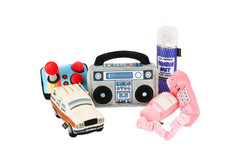If you have cats, you most likely have scratched-up furniture. Or, you would have if you hadn't trained your cat on time. However, if you're reading this, you most likely belong to the first category. Luckily for you, there are a few ways you can stop your cats from scratching furniture. What is important is that none of these ways includes declawing your kitten! In this article, you'll learn how to humanely train your cats to stop scratching furniture.
Why Do Cats Scratch Furniture?
Before we get into ways you can teach your cat to stop scratching your couch or other furniture, we have to cover the reasons why your cat is doing that in the first place. There are several reasons cats scratch things. Some of them include:
- Stretch Scratching furniture allows your cat to stretch their entire body and all of their muscles.
- To mark their territory. Scratching stuff creates smells that designate a cat's territory, and their paws have scent glands. The utilization of this type of communication is crucial in feline social systems. Even if you only have one cat, she will feel compelled to communicate in this way.
- It feels good. Cats love scratching because it feels great. Moreover, it reduces stress and the likelihood of your cat developing other undesirable habits. If your cat is scratching because they're bored, consider other ways to cure your cat's boredom.
- To maintain claw health. Finally, scratching also helps cats shed the outside nail husk periodically in order to keep their claws healthy.
Trim Your Cat’s Claws
A good, humane option to stop your cats from scratching furniture is to trim their claws every two to three weeks. If possible, it might be best to start doing that while your pet is still a kitten. If you have an older cat, though, you can still help them get used to nail clipping. All you have to do now is take it slowly and use incentives to promote good behavior. Try catching them while they're sleeping, and only use sharp trimmers because dull ones will only crush and splinter the nail.
Provide Scratching Posts
Vertical and horizontal scratching tools are a great option and are available in various materials, including sisal, rope, cardboard, and carpet. Observe your cat to figure out what kind of material they like to scratch, then get a scratching post made up of the same material. Consider other features too. For example, figure out what height is the object that your cat is scratching. Is it a vertical surface, like a couch arm, or a horizontal surface, like the carpet? When you have it all figured out - go shopping for a scratching post. Alternatively, you can also DIY a scratching post very easily at home.
Keep Furniture Safe During Transport
Scratching posts can vary in size, and sometimes they can be very big and hard to move. However, you can easily find movers who are experienced in moving and packing large items and will do their best to protect your furniture for safe transport. That includes furniture that belongs to your cats too. Once the post is safely at your new home, make sure to place it in the same spot where it used to be, so that your cat can start feeling at home as soon as possible.
Cover Scratched Places
You can use double-sided adhesive tape to cover your cat's favorite scratching spots. Sticky surfaces irritate cats, and they will normally avoid them. Sticky Paws is one such product, and it efficiently deflects your cat's sofa fixation. This is the best solution if you have multiple cats in one household who like scratching the same surfaces.
Furthermore, you can also try to remove the enjoyable aspect in locations your cat loves to scratch. Cover that problematic spot with foil or non-sticky, transparent plastic protectors. Alternatively, position a vinyl carpet runner in front of the location with the spike side up. All of these techniques can be used to create surfaces that your cat dislikes. These quick remedies will teach your cat to avoid certain spots in the future.
Praise Positive Behavior
When your cat scratches in places that aren't supposed to be scratched, don't yell or chastise them using their name. Instead, hiss or make an "ah" sound to reprimand the cat. Then, take the cat to the scratching post and praise them if they start scratching it. One way to reward your cat's positive behavior is through cat snacks or treats. Moreover, you can dangle the toys over the scratching post to entice your cat to inspect it or sprinkle catnip directly on the post. It may be necessary to repeat this process regularly for a few weeks for it to stick with your cat. Just be patient; it will pay off in the long run.
Soft Paws
Soft Claws or Soft Paws is a solution that can benefit cats that refuse to scratch in approved places. They are essentially nail caps that are initially applied by your veterinarian or groomer, but you can learn to do it yourself too. The main disadvantage to this option is that after a few weeks, fresh nail growth will force them off, and they will need to be changed. This can be pricey if you are unable to trim the claw back and replace the cap yourself.
Why You Shouldn’t Declaw Your Cat
Many people are worried about cats ruining their furniture, so they declaw them. It's crucial to realize that declawing a cat involves amputating ⅓ of the cat's paws. It's uncomfortable, has the potential for problems before and after surgery, and alters how your cat moves, balances, and interacts with its environment.
Furthermore, declawed cats can only be indoor pets. This is because they don't have the primary means of defense against predators. They also have trouble climbing trees due to pain and may develop aggressive tendencies over time. All of these are the reasons why you should try other ways to stop your cats from scratching furniture instead of declawing your kittens.
About the Author:

Isabella Rivers is an aspiring writer and content creator. She specializes in content related to home decor and design, but is also a great animal lover. Isabella has two cats and a dog, all rescues, and she plans on getting more in the future. When she's not writing, she's helping out local dog shelters and raising funds to support them.





